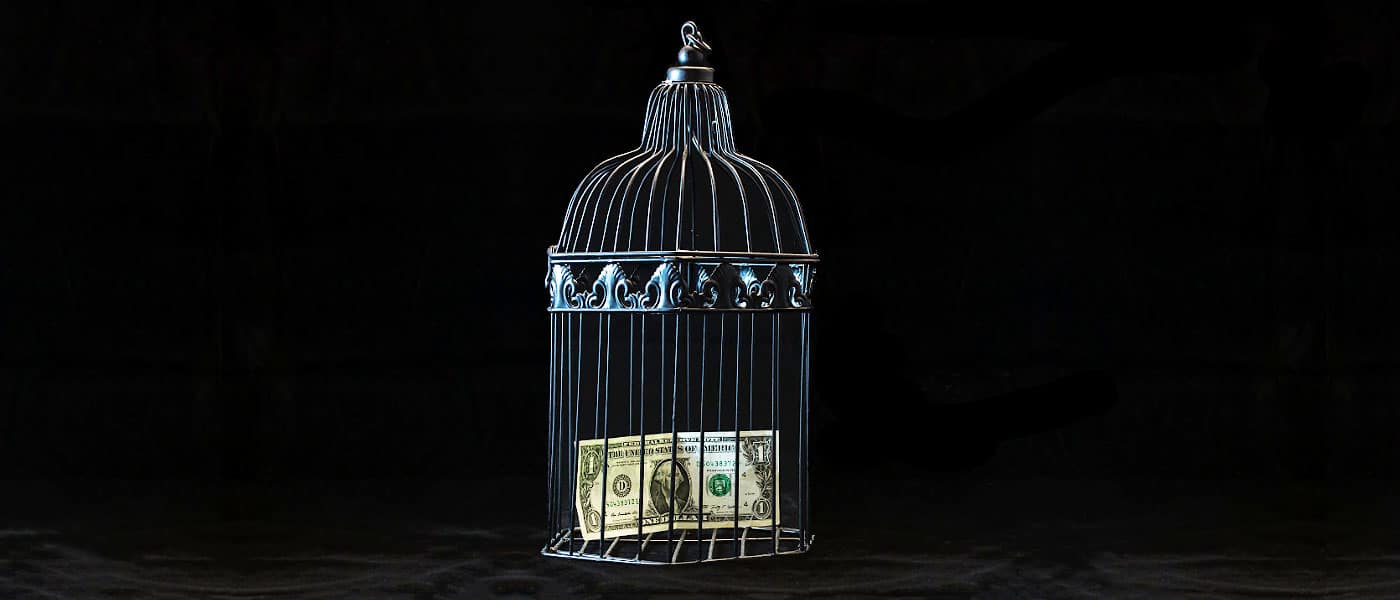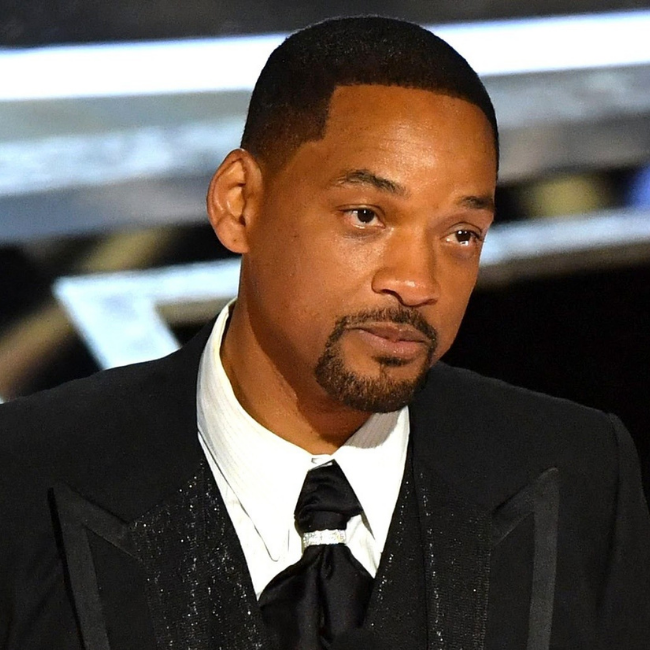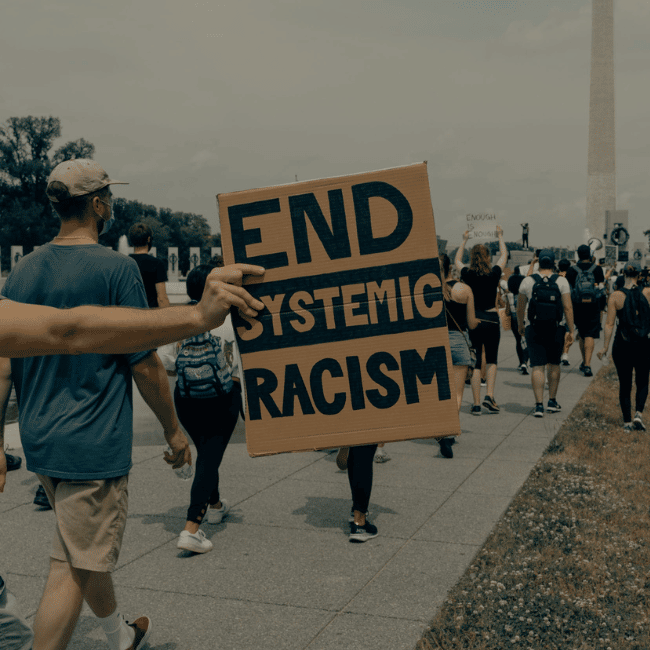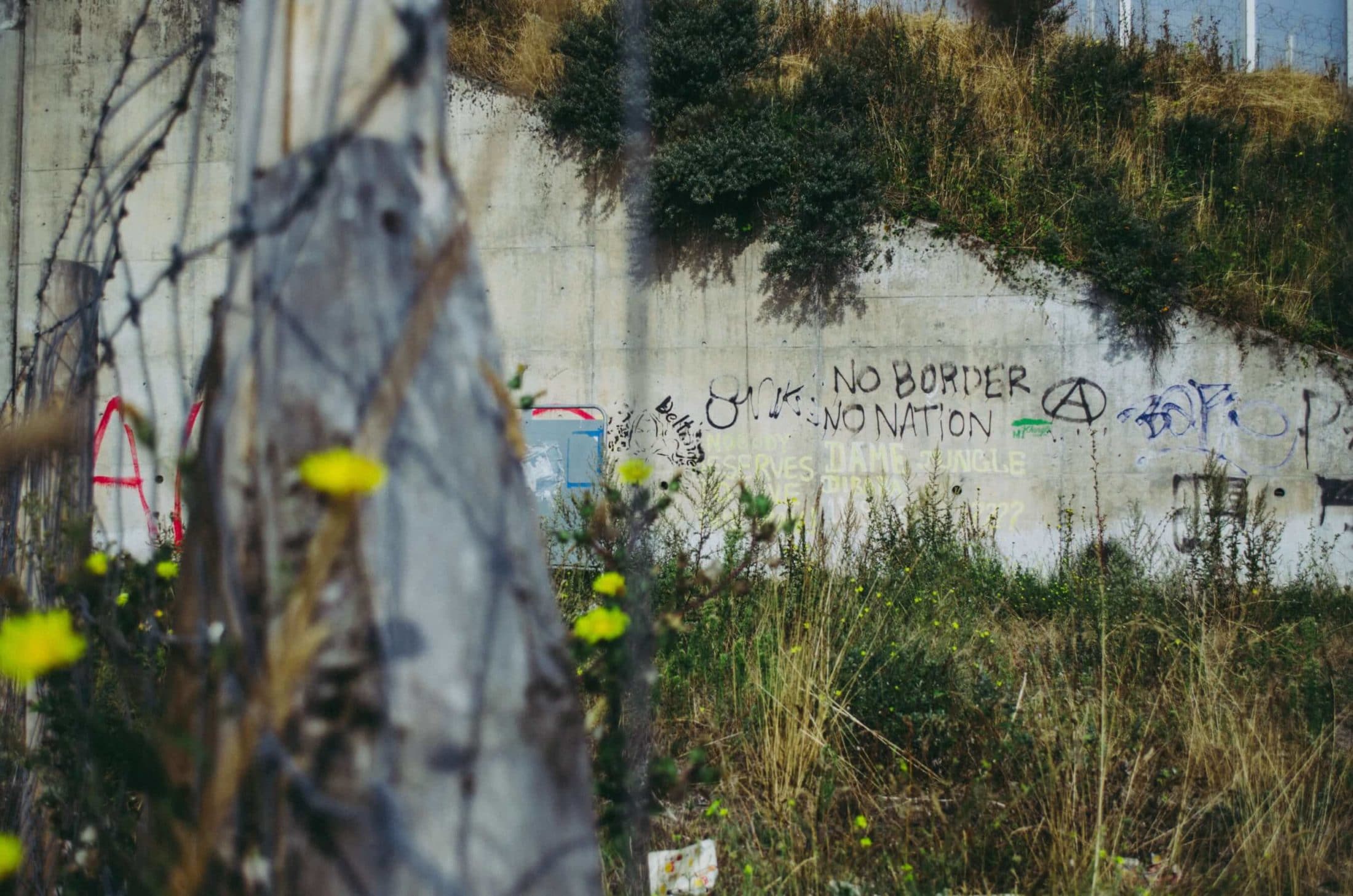The twin foundations of leadership

The twin foundations of leadership
Opinion + AnalysisBusiness + LeadershipRelationships
BY Simon Longstaff 14 APR 2014
For all of the talk about the importance of leadership, relatively few resources are applied to its support and development. Rather, the bulk of investment flows into building and maintaining the infrastructure of management and control.
The scale of this investment in regulation and surveillance is easy to underestimate. For example, government regulation is just the tip of an iceberg of which private sector compliance programs make up the larger part. As such, some of the most prolific rule-makers in the land sit at the nation’s board tables. Fearful of their own liability and hungry for certainty, company directors feed (and are fed on by) a narrowly conceived culture of compliance.
Of equal concern is the way in which organisations are led to disguise their real preferences by applying comforting (but misleading) labels to their programs. The fact that a management program has the word ‘leadership’ in its title does not make it a leadership program. Yet programs of this kind abound. This observation is not meant to suggest that there is no longer a need for strong management programs. In fact, the opposite is true. However, if organisations are ever to realise their full potential, the technical competence of managers needs to be reinforced by the art of leadership.
That we do not do so, in any extensive or meaningful way, is due to a number of factors not least of which is, as noted above, the fear of personal liability amongst people in positions of power and authority. In some respects, their fear is well-founded. Society has recoiled against an earlier period in history when people running public and private sector organisations seemed to be beyond the reach of accountability, no matter how terrible the consequences of failures in governance. Unfortunately, society’s response has been largely uni-directional; placing the majority of its eggs in the ‘regulation and surveillance’ basket. This has stimulated a vicious cycle in which those subject to these controls have replicated the approach, across the system as a whole.
However, there are two deeper issues to consider. First, it may be that society has lost faith in the power of good leadership to shape events for the better. That is, rather than rely on the qualities of people, society has thought to ‘engineer out’ their frailties by creating a system that is finely regulated so as to prevent any person from choosing to do what is wrong. Rather, if all comply with the technical demands of the system, it is assumed, ‘bad things’ will not happen.
While this kind of thinking is understandable, borrowing as it does from utopian/dystopian fantasies (depending on your world view) of risk-free and perfect certainty, it stands in contrast to what we know of reality. Furthermore, the model of the ‘finely regulated system’ contains within it the seeds of its own failure. Rather than eliminating risk, such a system increases systemic risk (risk to the system as a whole) by reducing the capacity of any single actor to make good decisions when the system is sub-optimal in its performance.
The best analogy that I can think of for this risk is that of putting a person into a full-body plaster cast as a way of ensuring that they maintain a straight and steady posture. To the casual observer, this will seem to be a model of stability. However, unseen within the bounds of the cast, the person’s body will be changing; muscles wasting away to nothing for want of use and bones losing their load-bearing capacity. The more perfect the performance of the plaster cast, the more the degradation within. Should the plaster cast fail, the body within will be doomed to collapse. Of course, everyone knows that this true, even those who design, build and maintain the plaster cast. Their response is to patch, reinforce and refine the plaster cast.
However, there may be a second factor that limits our investment in leadership. Apart from not trusting the variable human dimension to leadership, it may also be that we no longer really understand what leadership involves and requires. It is this issue that will be addressed in the remainder of this article.
The most potent enemy of ethical leadership is unthinking custom and practice.
Defining leadership
There are many definitions of leadership from which to choose. The one that I find most compelling forms part of the doctrine of the Australian Defence Force. The ADF defines leadership as, “The exercise of influence in order to bring about the willing consent of others in the ethical pursuit of missions”.
I like this definition for a couple of reasons. First, there is an emphasis on influence and consent. There is nothing here about the exercise of power or insistence upon compliance. Second, it is striking that the military conceive of leadership as an ethical practice. That is, they do not aim to treat the ethical dimension as something that is to be ‘bolted on’ to leadership, as an ‘extra’ (optional or otherwise). Rather, ethics is an integral (and integrated) part of leadership. The reason for this is not hard to discern.
There is a telling maxim in military affairs, “no plan survives first contact with the enemy.” The profession of arms intersects with a world of rapid change, unpredictability, and lethal consequences. If you do not manage risk, then the consequences are not merely some dent to the ‘bottom line’ but quite possibly death or injury. Such hard facts concentrate the mind. The military have learned that this is why leadership, as defined above, really matters. When all of the carefully constructed systems and structures have broken down, the only thing that may stand between success and failure will be those human factors embedded in the quality of leadership.
Of course, it must be noted that the world of the military is one of extraordinary contexts and demands, in many a world apart from ordinary world of civilian life. Yet, for all of the very real differences, we should not ignore a core lesson. Investing in ethical leadership is the most effective way to manage risk.
But what does such leadership involve? What does it require of those who would lead? And are there any core lessons for leaders? In my opinion, good leadership is built on twin foundations: strategic vision and moral courage.
Strategic vision
There are three elements to strategic vision:
- The ability simultaneously to ‘see’ a situation at multiple levels. There is the ‘satellite’ level that reveals the larger picture within which specific issues are located. There is the ‘submarine’ level that reveals how specific issues are affected by ‘undercurrents’ that shape the operating environment. Finally, a leader with strategic vision sees things in the moment, being entirely ‘present’ to those dealing with specific issues or an evolving situation. As one might recognise, it takes a particular ‘presence of mind’ to operate simultaneously at all three levels. Yet this is something that good leaders can be trained to do.
- The ability to employ a kind of empathetic ‘moral imagination’ that places a leader in the shoes of key participants including, supporters, allies and foes. The capacity to ‘read oneself’ into a situation, to see events as others might see them and to understand the implications of these perspectives, is of considerable advantage to leaders. An important function of a leader is to bring such insight to bear on a situation as to enable and encourage others to proceed down paths that would otherwise remain obscured or closed to them.
- Being able to simultaneously ‘see’ a situation at multiple levels and employ ‘moral imagination’ gives rise to a third ability: the ability to perceive (or sometimes to create) ‘inflection points’. Inflection points are best understood as presenting opportunities to redefine the conditions under which success might be achieved. Those who perceive or create inflection points are not bound by a fixed description of a particular situation. Instead, they are more likely to see apparently fixed points as variables that can be reconfigured to provide new opportunities. Put simply, strategic vision allows leaders to see new possibilities not apparent to others.
Moral courage
The other foundation for leadership, moral courage, is made necessary by the fact that many individuals and organisations prefer the comfort of the familiar, even if ‘the familiar’ is outmoded and dangerous. Those who would lead must be prepared to challenge patterns of unthinking custom and practice that typically define the environment in which they work.
In most cases, if you ask people to explain their conduct, the typical response will be that “everybody does it this way” or that it is “just the way we do things around here”. That is, people will be either unwilling or unable to link what they do to a clearly articulated and understood framework of purpose, values and principles. Usually this tendency will be relatively harmless in its effects. However, in some cases, unthinking custom and practice will expose an organisation to risk if not ruin. And when all of the damage is done and people are asked to explain why they engaged in such ruinous conduct they will say, truthfully, that they did not see the risk at the time. Instead, what they saw will have been a world viewed through a limited lens, the lens of ‘the familiar’.
It is against this background that one of the defining roles of a leader is to engage in and foster acts of ‘constructive subversion’.
Constructive subversion undermines unthinking custom and practice by questioning the basis for perceiving the world through the eyes of ‘the familiar’. Such acts of subversion are not destructive because the task of a good leader is to help each organisation to become more like the thing it says that it wants to be. That is, leaders are not supposed to impose upon an organisation a personal or idiosyncratic view of what it should be. Instead, their task is to serve a defining purpose within a governance framework with core values and principles at its heart.
To do any of this, not least to question the often long-established precedents of unthinking custom and practice is to invite the disapproval of those with an investment in the status quo. Whatever the organisational structure, there is likely to be a majority who protect ‘the familiar’ and who will resist those who seek to probe and expose its limitations. That is why leaders need to draw so heavily on a reserve of moral courage.
This is not to suggest that people should be reckless in their style of leadership. Good leaders are not required to throw themselves onto the ‘funeral pyre of integrity’ whenever the opportunity arises. Effective leaders understand that there is more to be achieved than a few beautiful sparks arising from the embers of their career. While there will be times when a stand must be made as a matter of principle, leaders will draw on their capacity for strategic vision by sensing, by seeing how and when to prosecute a particular course of action. Thus moral courage, like all virtues, requires a leader to discern the ‘golden mean’ that exists between the twin poles of rash and foolhardy action and the procrastination of the coward.
Becoming a leader
Earlier, I proposed a distinction between the techniques of management and the art of leadership. I noted that both capacities are valuable–even essential–arenas for human development, but suggested that our society does a poor job of investing in leadership. Instead, we seem to be inclined to ‘re-label’ management programs with the word ‘leadership,’ and pretend that the issue is being addressed.
A sure sign of a mislabeled program will be that it is structured around exercises that take place within a formal learning environment. Having spent over two decades working with and developing leaders, I am convinced that the art of leadership only emerges as a result of experiential learning. Learning of this kind tests and refines a person’s leadership capacity within a crucible of ‘embodied experience.’ Understood in these terms, authentic leadership programs work over an extended period of time, exposing their participants to a range of experiences that challenge them physically, intellectually, emotionally, and spiritually. Ideally, participants meet each challenge and, in doing so, come to recognise their own latent capacity to lead when called upon to do so. The process of self-validation that comes about within a well-structured program is essential. A notional leader can have all of the technical skills in the world yet lack the self-belief necessary to risk taking up a leadership challenge.
This article is not the place to outline the kind of ‘curriculum’ that is better suited to the task of developing effective leaders. However there is nothing especially mysterious about the process. Indeed, the only real mystery in developing and implementing programs that build effective leaders is that so few organisations invest adequately in the task. Instead, most organisations adopt the comforting myth that leaders can be made ‘on the cheap’ and in a matter of weeks, largely spent within a training room.
Becoming a leader, regardless of one’s formal role in an organisation, requires time and practice, ideally accompanied by a small, supportive group of others making the same journey. Along the way, good leaders pick up some essential skills, including an ethical literacy that can be used to explain and inspire across varied audiences.
To conclude
The most potent enemy of ethical leadership is unthinking custom and practice. It is this that leads otherwise good persons to participate in or to tolerate evil deeds. Thus, an ethical leader will always seek to look beyond conventional morality in favour of the application of an ethical framework that is based on personal reflection and is authentically held as the basis for living a responsible life.
Ethical leaders are actively engaged in acts of ‘constructive subversion,’ subverting unthinking custom and practice in order to build organisations and communities that increasingly become more like the thing that they say they ought to be as flourishing human communities.
To lead in these terms is to court unpopularity, often from all quarters where the majority will prefer simple certainties and a quiet life based around comfortable habits. Thus the need for leaders to possess an unusually high degree of moral courage, as must be drawn on when even the leader may be plagued by genuine doubt about how best to proceed.
Under this model, the requirement for leaders is essentially personal in character:
- a well-formed (and informed) conscience
- a well-formed (and informed) intuition (there should be no tolerance of those who are too lazy or complacent to work towards the refinement of their intuition)
- the virtues of moral courage and humility
- respect for the intrinsic dignity of others
- a capacity for discernment (including strategic vision and empathy)
These are the attributes that inspire others to follow, willingly–even to a point of personal sacrifice. This is what lies at the heart of ethical leadership: the art of doing..
Ethics in your inbox.
Get the latest inspiration, intelligence, events & more.
By signing up you agree to our privacy policy
You might be interested in…
Explainer
Business + Leadership, Politics + Human Rights
Ethics Explainer: Liberalism
Opinion + Analysis
Relationships, Society + Culture
What money and power makes you do: The craven morality of The White Lotus
Opinion + Analysis
Relationships
Can we celebrate Anzac Day without glorifying war?
Opinion + Analysis
Business + Leadership, Politics + Human Rights
Democracy is still the least-worst option we have
BY Simon Longstaff
After studying law in Sydney and teaching in Tasmania, Simon pursued postgraduate studies in philosophy as a Member of Magdalene College, Cambridge. In 1991, Simon commenced his work as the first Executive Director of The Ethics Centre. In 2013, he was made an officer of the Order of Australia (AO) for “distinguished service to the community through the promotion of ethical standards in governance and business, to improving corporate responsibility, and to philosophy.”
Ethics in engineering makes good foundations

Ethics in engineering makes good foundations
Opinion + AnalysisBusiness + Leadership
BY Rolfe Hartley 29 MAR 2014
As an engineer, I work in a profession that generally maintains high ethical standards. Our peak representative body, Engineers Australia, has a strong code of ethics.
As the leader of that review team, I spoke with many of our members and was impressed with the importance they placed on ethical behaviour.
Yet in spite of this, I sometimes see things that disappoint me. Take for, example, a World Bank decision in June 2013 to add a major Australian engineering consultancy firm to the World Bank’s list of debarred and cross-debarred firms for a year. This meant that for a 12-month period, that firm could not win any World Bank projects, could not work for a firm awarded World Bank contracts, and could not receive any proceeds from the bank.
The World Bank Sanctions Board found that the firm fraudulently failed to disclose its agreement to pay a $US34,000 ”marketing fee” to a sub-consultant, submitted invoices for reimbursement of $US210,000 in housing costs not actually incurred, and used false supporting documentation to request reimbursement of $US150,000 in vehicle and transport expenses.
Because of this, the firm was cut off from a significant area of business. While technically this bar lasted only 12 months, the actual impact was likely much greater. The reputational damage would certainly result in a much higher level of scrutiny of the company’s tenders in this and other areas of business. By their own actions, they had taken a level playing field and made it an uphill climb. The impact on company morale must have been severe.
This shows why maintaining high standards of ethical behaviour is not simply the right thing to do. It is a business essential if firms are to maximise their opportunities and their return on investment in staff, technology and skills.
Cutting ethical corners may seem attractive to a manager focused only on winning the next job, but such attitudes have no place in an organisation wanting to build a healthy, long-term business.
Engineering is a tough market. There are many firms that can provide clients with high levels of technical advice, so the pressure is on to find that ‘differentiator’ which gives you the edge. Unfortunately, there are times when those competitive pressures see firms taking the sorts of actions I discussed in the example above.
Cutting ethical corners may seem attractive to a manager focused only on winning the next job, but such attitudes have no place in an organisation wanting to build a healthy, long-term business. You might do it once or twice, but this approach will eventually catch up with you, just as it did the firm in the World Bank example.
To my mind, the best business differentiator is to combine technical excellence with a willingness to build long-term relationships with clients. You should forge partnerships that focus on the client’s needs so you become sought after as a trusted provider of services.
Ethical behaviour is at the heart of this. As a colleague of mine with a major engineering firm says, “High ethical standards and conduct are regarded as a survival imperative in our company. Our attitude is that the first time you give advice that is not professionally and intellectually independent is the last time you will have the opportunity.”
Apart from the immediate loss of business that results from unethical behaviour (real or perceived), there are other longer-term impacts. I once worked for an American multinational that was frequently accused of unethical behaviour. That was all a long way from the Australian arm of the business, yet the mud stuck.
We once had a booth at a graduate recruitment fair and got positive responses from quite a few final-year university students. We invited them to a meeting to discuss opportunities and introduce our graduate program. But a number said, “I’m sorry but I have done some research on Google and I don’t like the things I found there. I don’t think I could work for a company like that.” So our opportunity to recruit some of the brightest young graduates available was lost.
There are a number of strategies that engineering firms with high ethical standards follow. These strategies make good business sense by better managing risk – reputational and financial – along with enhancing the decision-making capacities of staff. But importantly for the industry and the professionals themselves, these strategies reverse the race to the bottom driven by short-term thinking.
- See the big picture. A successful business is not simply a collection of jobs, one after the other. Growing your business requires a strategic understanding of how individual projects and assignments can take the company to where you want it to be.
- Lead from the front. Ensure that all levels of management take their ethical responsibilities seriously and display zero tolerance to unethical behaviour. Act as role models for staff at all levels.
- Have a code of conduct and enforce it. Here I must emphasise that a code of conduct is not simply a list of rules. Ethical problems are often complex and do not lend themselves to simple ‘let’s look up the book’ solutions. Often, the process of ethical analysis and reflection is as important as the final decision. The following quote from the Engineers Australia Code of Ethics summarises the characteristics of the best codes:
“Our Code of Ethics defines the values and principles that shape the decisions we make in engineering practice. The related Guidelines on Professional Conduct provide a framework for members of Engineers Australia to use when exercising their judgement in the practice of engineering. Ethical engineering practice requires judgement, interpretation and balanced decision-making in context.”
- Embed your code of conduct in sound induction and staff development programs. New staff should have no doubt as to what is expected of them. But don’t simply read them the riot act – ensure your development programs provide an opportunity for staff to learn about ethical behaviour and understand the importance (and difficulties) of ethical analysis.
- Provide staff with opportunities for ethical learning and reflection. Ethical decision-making is often complex. You can help staff develop their ethical understanding and skills by reflecting on the ethical aspects of past or recent case studies.
- Support your staff. Ethical behaviour involves two-way conversations, so provide a mechanism where staff can discuss and seek advice on ethical issues. As my colleague from earlier says, “There is hardly a day goes by when I am not asked to assist people to think through what is the ‘right thing to do’ in various circumstances”. Another major company I know has a procedure where staff can inject ethical concerns into decisions about pursuing new jobs. In some instances, this has led to the company not chasing significant projects.
- Build open and honest relationships with clients. Help clients understand and deal with ethical issues when they arise.
- Consider the ethical aspects of everything you do. Remember that because something is legal, that does not automatically make it ethical.
- Don’t be afraid to say no. If a potential client is asking you to cut corners or act unethically, then they are not the sort of client you want to work with.
Unethical behaviour is not confined to the commercial sector. It also exists in the public sector. This is not to accuse individuals working in government as deliberately acting unethically. Rather, it’s to point out how standardised policies and procedures serve to systemically support unethical behaviour.
The area that I am most familiar with is government procurement policies for infrastructure projects. There is a golden rule in engineering procurement that good contracts allocate risk to the parties best able to manage that risk. Many standard government contracts do not – they endeavour to allocate almost all risk to the contractor (whether the contractor can manage that risk or not) while absolving the government from risks that they are best able to manage. Contractors are then expected to accept unlimited liability for their actions. In addition, many government procurement procedures still focus primarily on lowest price, even though their stated policy may be to seek the best available value for money.
No doubt these practices are motivated by well-intentioned attempts to get the best value for public expenditure and to protect procurement authorities (and their political masters) from exposure to unnecessary risk.
However, the unthinking application of these policies has driven engineering consultants and contractors to operate in an environment of unrealistically low margins and unreasonably high risk. This environment is conducive to unethical behaviour, with companies cutting corners and acting inappropriately in order to win work and stay profitable.
What’s unfortunate about this is that at the heart of an act of unethical behaviour, there is often someone who thinks they are doing the right thing for the company. When these things occur, you often hear justifications like “it’s a tough market and we have to do this to survive”, “if we don’t do it someone else will”, or “we haven’t done anything illegal”.
In my experience, unethical behaviour by engineering companies is not common. But if we are to see a business environment where corner cutting is eliminated, governments need to lift their game too.
Let me conclude with a quote from Shakespeare because, when all is said and done, ethical behaviour relies on the ethical understanding of individuals. As Polonius states in Hamlet,
“This above all: To thine own self be true, and it must follow, as the night the day, Thou canst not then be false to any man.”
Ethics in your inbox.
Get the latest inspiration, intelligence, events & more.
By signing up you agree to our privacy policy
You might be interested in…
Opinion + Analysis
Business + Leadership
Doing good for the right reasons: AMP Capital’s ethical foundations
Opinion + Analysis
Business + Leadership
Why Australian billionaires must think “less about the size of their yard” and more about philanthropy
Opinion + Analysis
Business + Leadership, Relationships
Can you incentivise ethical behaviour?
Big thinker
Business + Leadership
Big Thinker: Karl Marx
BY Rolfe Hartley
Rolfe Hartley is a civil and environmental engineer with over 30 years’ experience in the management of large infrastructure and environmental projects. His experience includes senior positions in both the public and private sector.
The ANZAC day lie

A group of women in New Zealand, all in their 70s, dutifully get up early every morning in April. They have a cup of tea and bowl of cornflakes, feed the magpies in the backyard, and head out to the main street of their town.
They walk in small groups of two or three from business to business in their neatly pressed pants, politely speaking to shopkeepers and business owners about supporting their cause. They’re raising money for scholarships, to help young people attend university.
But these aren’t ordinary women. They’re refused and shouted at. Even the kindly old man at the butcher’s shop, who’s known them all their lives, won’t help them. Because they’re radicals. They’re threatening the system. They’re selling pretty little white poppies made out of fabric and green wire on ANZAC Day. Why?
For peace.
Take a three-hour flight across the Tasman Sea to Australia and we have the same problem. Any attempt to shift ANZAC Day to anything other than its carefully crafted script and dominant paradigm is seen as a threat.
Criticism of the manner of commemoration is deemed by some to be disrespectful, sacrilegious or, dare I say it, un-Australian. Those offended, however, often don’t see the criticism as separate to the individuals involved. They pair the two together despite their fundamental differences.
On this, Australian historian Mark McKenna is quoted as saying:
ANZAC has now become a dangerous tradition in which critical debate and political controversy are whitewashed. ANZAC engulfs dissent and division, burying any hint of disloyalty and deviance beneath the compulsion to be patriotic and stand by our troops.
Criticism of the manner of commemoration is deemed by some to be disrespectful, sacrilegious or, dare I say it, un-Australian.
What’s wrong with ANZAC?
“What’s wrong with ANZAC?” Marilyn Lake, the Australian historian, asks. “The militarisation of Australian history”.
The ANZAC myth is a calculated and deliberate distortion of Australian history to shape our collective historical memory, inform our schemas, and influence the way we look at the world.
The battle of Gallipoli is a tiny event in Australia’s history and in the war effort of WWI. Yet it’s promoted to be one of the most, if not the most, important day of the Australian calendar. It’s characterised as the birth of the Australian identity – as if to say that nothing at all happened in Australia until the ANZACs ran up that narrow beach to be pelted by bullets from Turkish soldiers who lined the sheer cliffs at Gallipoli.
Everything before 1915 is out. That’s Federation, the Eureka Stockade, a big chunk of the suffrage movement, and about 40,000 years of indigenous history. Lake says:
These commemorations have been taken over by delusions of national significance – that our values and national identity was born and shaped on ANZAC Day at Gallipoli – when in fact it is our civil and political history that has shaped our national democratic values.
Twenty years ago, most people expected ANZAC Day to disappear as the last diggers died, like other days of memorial. It probably would have – had it not been for former prime minister, John Howard. Howard, then newly elected, had always been interested in history and wanted to get away from the history wars that had dominated the 80s and early 90s.
To do this, he decided to open up a new front overseas. While he was not the first to start the process of the reinvention of ANZAC Day, he took on the issue as his own project, becoming its vanguard.
He undertook a deliberate process of re-education, led by the newly formed Department of Veterans Affairs (DVA), which was created in 1996, replacing the Repatriation Commission formed in 1917. The DVA had a much broader mandate than the Repatriation Commission, which had only commemorated people individually for giving their lives.
Since 1996, the DVA has worked on several key strategies:
- The identification of new national days of remembrance which mostly end up being new battles
- The refurbishment of war memorials and the building of new ones including war memorials for minority groups, long forgotten wars like the Boer War and the war effort of dogs and horses;
- Education about significant events and education in schools. Curriculum materials, prizes, videos and textbooks have been developed for this purpose.
- And community awareness campaigns that often focus on the collection of oral histories and medals for exhibition.
Peter Fitzsimons admits there was great renewed interest in ANZAC Day in the late 1990s. He is not convinced, however, that it was because of Howard and believes it is the quality of the story that has drawn people in.
Wearing his iconic red Che Guevara bandana standing in front of the crowd at the Opera House, FitzSimons solemnly declared that he is “Not a historian, … I speak from the heart and not from the head”. He spoke passionately about his connection to ANZAC:
On the ANZAC tradition, I was raised on it. My father was a soldier and my mother was an army physiotherapist.
He still makes it clear that although he came from a defence family, he was against the Iraq war and marched in the streets with the hundreds of thousands of other Australians.
Despite his opposition to the war, he is still determined to honour those who fell in Iraq through the vehicle of ANZAC – which he says has grown to encompass all veterans of all wars. After watching FitzSimons, it became clearer that he was using these individuals as a reason to justify the whole day. He did not separate them from the manner and system of commemoration which, arguably, provides a context for Howard more conducive to the politics surrounding the Iraq war.
The odd and distorted romanticism surrounding ANZAC Day and its attribution to the Australian identity may be because we don’t have an independence day. As Australia Day is becoming confused and recognised more and more as the day of British invasion, we go back to ANZAC Day. Even though it was the invasion of another sovereign territory, it escapes negative connotations.
For a day of military commemoration to be one of our most important national days, reveals the elevation of masculinity and militarism in Australian values and identity. All other groups – women, racial or religious minorities, Indigenous Australians – are excluded.
Attempts to include them in the day and the broader concept through the inclusion of other wars and conflicts are often redundant because of the ANZAC-centric focus, and constant remembrance of the mandated legend means Australians who meet the characteristics of the original ANZACs can be perceived as more Australian than others.
The Dardanelles campaign from the perspective of Keith Murdoch, Rupert Murdoch’s father and a war correspondent during WWI, was scathing. He wrote a damning letter to then Prime Minister Andrew Fisher while he visited the Gallipoli Peninsula, arguing that Australia was being used as a pawn, wasted and manipulated in the war efforts at the behest of the Allies. This dangerously contradicted the authorised propaganda coming out of the government.
Murdoch argued passionately that the ANZACs at Gallipoli had been victim to the poor strategic planning of the allied military leaders. This perspective received little genuine attention by the government of the day and has found itself lost beneath the concept of ANZAC. So too has the fact that ANZAC Day marks the date of the invasion of a sovereign territory, the Ottoman Empire.
FitzSimons, a passionate and engaged advocate of ANZAC and anti-Iraq War activist, remembers how shocked he was to learn this fact from a radio broadcast in 1999 while driving in his car.
The exclusion of these particular perspectives from our national ANZAC narrative is interesting when considering Australia’s role in more modern wars and our unrepresentative sense of importance in these foreign theatres. More importantly, it gives insight into our self-made narratives concerning the decisions to be involved in wars which disguise the power relationships between us and the US.
In a way, this reveals what is still deep in the psychology of Australians – the mindset of a colony. This relationship of empire and colony has shifted from the UK to US, particularly in wars since Vietnam up until now.
ANZAC reinforces our self-image as a greater power’s ally and aggrandises our need to unquestionably respond to their instructions and demands. Like in Gallipoli, we hope they will protect our national security, rather than looking inward and developing our own regionally based relationships and strategies.
Instead of recognising our role in conflict, which is often being the pawns of powerful empires, we ignore it and transform our participation into something much more palatable. Our national security policies over the years reflect this deep cultural understanding of our place in the world.
Hugh White from the Australian National University argued in The Monthly that, as we’ve continuously flitted between attempting to be self-sufficient and relying on the support of a great empire, we’ve ended up doing neither well. A colonial mindset means that while we’ve toyed with the idea of self-sufficiency, we can always be relied upon to look back up to the wisdom and strength of that great power.
The relentless commemoration, creation, and control of our collective historical memory has served to create a social backdrop where it’s easier to politically justify the wars our powerful friend wants to wage. Lake believes that the relentless and calculated commemoration of ANZAC has served to “naturalise and create a conducive environment for war”.
Although there are no parades of tanks down George Street on ANZAC Day or overt military breast-beating, the constant remembrance of war, alongside the controlled, unbalanced, and unrepresentative focus on our military history reinforces violence and military solutions as key options to resolve international conflict. We see the military as a feasible and successful mode of conflict resolution, but don’t look at the real cost of war.
Academic Tony Smith argues that:
[Our] reluctance to criticise the military has its origins in the notion that troops are risking their lives for us. A more realistic and non-militaristic view would acknowledge that while troops might well die for Australia, their primary role is to kill for Australia.
We are mindful that when we send Australian troops on overseas postings they could die for us but seem to ignore the reality that in order to do their jobs they must threaten to kill on our behalf, and sometimes do so.
This is the reality of war and its cost.
Criticising ANZAC is a serious thing. It isn’t just a criticism of the day and the commemoration. It’s a criticism about the exclusivity of the legend and what has been accepted to be Australia’s identity and birth as a nation. It’s a criticism of the folly of war and Australia’s role as a pawn in international conflict, a criticism of Australian defence policy, and a criticism of our relationship with the US.
Dissent from the mandated narrative is serious because it threatens power structures that stretch between the smallest of communities to the grandest of political theatres where geopolitical relations play out. These structures work to reinforce war and not peace, promote a white Australian identity rather than a multicultural one and fortify our inability to act in our best interests in foreign policy decisions.
This is what is wrong with ANZAC.
Ethics in your inbox.
Get the latest inspiration, intelligence, events & more.
By signing up you agree to our privacy policy
You might be interested in…
Big thinker
Relationships
Big Thinker: Simone Weil
Opinion + Analysis
Relationships
It takes a village to raise resilience
Opinion + Analysis
Relationships
Is masculinity fragile? On the whole, no. But things do change.
Explainer
Relationships
Ethics Explainer: Authenticity
BY Belinda Lowe
Belinda Lowe currently works as a Field Organiser in the union movement. She has presented a dissertation at the Global Rethinking International Criminal Justice Research Initiative and has volunteered with a number of organisations including the Cancer Council, Amnesty International and the Women’s International League for Peace and Freedom. Lowe holds a BA in Communications and a Masters in Peace and Conflict Studies.
Power without restraint: juvenile justice in the Northern Territory

Power without restraint: juvenile justice in the Northern Territory
Opinion + AnalysisPolitics + Human Rights
BY Simon Longstaff 1 OCT 2012
The institutional abuse of children detained by the government of the Northern Territory is a bone-chilling example of what occurs when raw power is exercised without ethical restraint.
The scenes broadcast by the ABC’s Four Corners program in July 2016 were the stuff of nightmares – the kind of thing done by ‘other people’, in ‘other countries’, in ‘other circumstances’. But this nightmare became real, for us – here and now. The prime minister announced a Royal Commission to investigate what had happened and why.
But first, we need to look at the general conditions that made the unthinkable possible. Those conditions do not just apply in the context of juvenile ‘justice’ in the Northern Territory. Australian governments are responsible for the detention of people throughout our states and territories as well as on Manus Island and Nauru. In every case, there is a risk (and often a reality) of people with power exercising it in a manner that fails the test of the most basic standards of decency.
Every person who is detained deserves to be treated with a basic measure of respect – even those who committed the foulest crimes still retain their intrinsic dignity as a ‘person’.
Second, we need to reckon with arguments that the ‘ends justify the means’ and the prisoner or detainee is the author of their own fate – that they ‘deserve what they get’.
Normally, you would expect parliaments in a liberal democracy to place strict curbs on the exercise of power by government officials. But in recent years, the tendency has been to take the opposite path – to smooth the way for excess.
This has been done by creating numerous exceptions to the application of usual legal and ethical restraints that have been designed, over millennia, to tame power – such as judicial oversight, civil and criminal liability, media scrutiny and respect for individual rights like habeas corpus.
Australia has wide exemptions – for members of the intelligence services, for those detaining suspected terrorists, for detention centres and, as evidenced in the Four Corners report, for those guarding juvenile detainees in the Northern Territory.
Section 215 of the Northern Territory’s Youth Justice Act confers a wide-ranging immunity on virtually all people working with juvenile detainees. Specifically it says:
“The person is not civilly or criminally liable for an act done or omitted to be done by the person in good faith in the exercise or purported exercise of a power, or the performance or purported performance of a function, under this Act.”
It is yet to be determined whether or not the behaviour revealed by Four Corners was done ‘in good faith’. If so, then the people responsible can never be held to account. The parliament of the Northern Territory has, for all intents and purposes, written a blank cheque.
Cultural failure is the responsibility of those in positions of authority. It cannot be addressed by lopping off the heads of a few ‘rotten apples’ buried in the depths of the barrel.
These provisions were likely enacted as part of a law-and-order campaign. It probably never occurred to legislators that children might be tear-gassed, bound to chairs (and all the rest) by their guards. I’ve no doubt they are now appalled at what has been done. But their lack of forethought does not lessen their responsibility for what they have made possible. It only deepens it.
Governments bear the ultimate responsibility for the treatment of those they detain. Such responsibilities cannot be outsourced. Every person who is detained deserves to be treated with a basic measure of respect – even those who committed the foulest crimes still retain their intrinsic dignity as a person. If we do not deny this for the worst of humanity, how can it be absent for children? They may be angry. They may be rebellious. They may be violent. Even so, they are children. Our children.
It is almost certainly the case that those responsible for abuse are not monsters. They will be just like most of us – most likely unable to conceive of treating their own children as they have those in detention. It’s an age-old puzzle. How can basically good people end up doing such terrible deeds?
It will be revealing to see if we take a wider look at what made this national disgrace possible and ask where else the same seeds have been planted.
There are a number of factors that were likely at work here:
- The guards could have been conditioned to look at their task through a purely legal lens – ‘if it’s not illegal it’s not wrong’.
- An element of tribalism – people conforming to the norms of a tight (usually isolated) group that overwhelms the dictates of individual conscience.
- A belief they were serving a ‘higher good’ (law and order) and their child victims deserved harsh treatment.
- A belief that the methods employed were ‘best practice’ sanctioned by a ‘respected authority’.
- A sense the children were not deserving of basic respect because they were ‘not like us’ – most likely linked to their Aboriginality.
- And most importantly, people within the group may have questioned what was being done while lacking the moral courage to speak out for fear (usually well-founded) of retribution.
Cultural failure is the responsibility of those in positions of authority. It cannot be addressed by lopping off the heads of a few ‘rotten apples’ buried in the depths of the barrel. Instead, we need to look at the ‘rotten barrel’ – and who made and maintained it.
How we respond to this issue will tell us a lot about Australia and its people. In particular, it will be revealing to see if we take a wider look at what made this national disgrace possible and ask where else the same seeds have been planted.
Ethics in your inbox.
Get the latest inspiration, intelligence, events & more.
By signing up you agree to our privacy policy
You might be interested in…
Opinion + Analysis
Health + Wellbeing, Politics + Human Rights
Disease in a Time of Uncertainty
Opinion + Analysis
Politics + Human Rights, Relationships
The Dark Side of Honour
Opinion + Analysis
Politics + Human Rights, Relationships
Adoption without parental consent: kidnapping or putting children first?
Explainer
Politics + Human Rights, Relationships
Ethics Explainer: Critical Race Theory
BY Simon Longstaff
After studying law in Sydney and teaching in Tasmania, Simon pursued postgraduate studies in philosophy as a Member of Magdalene College, Cambridge. In 1991, Simon commenced his work as the first Executive Director of The Ethics Centre. In 2013, he was made an officer of the Order of Australia (AO) for “distinguished service to the community through the promotion of ethical standards in governance and business, to improving corporate responsibility, and to philosophy.”
The value of principle over prescription

The value of principle over prescription
Opinion + AnalysisBusiness + Leadership
BY Simon Longstaff 1 OCT 2012
As a child, I visited the ski fields of New South Wales but once. So, you would think that my most enduring memory of that vacation would be of snow. But it is not. Rather, I remember a lamb chop—or, more particularly, the circumstances giving rise to a BBQ in a bushland clearing somewhere out of Cooma.
The chop had been purchased from a local butcher who sold his fare from an old-fashioned shop. The butcher operated from within an area enclosed by fly screen and served his customers through a sliding hatch. Inside, activity centred on a large wooden block set on a floor strewn with sawdust producing the earthy scent of freshly sawn timber. Having purchased our chops, we drove on into the country where we found a picnic spot somewhere off the road. In a family ritual, we older children were sent off to gather twigs for kindling and sticks for a fire used to cook our chops on a grill set on rocks surrounding the small fire. Having eaten, we made safe the fire and returned the area to how we had found it before ascending to the snow line.
Sadly, the experiences I describe have been almost regulated out of existence. Butchers can no longer dress their floors with sawdust. Travellers may no longer set small fires to cook their lunch in bushland settings but must find a ‘permanently constructed fireplace at a site surrounded by ground that is cleared of all combustible materials for a distance of at least two metres all around’. The rules preventing such things have been introduced for perfectly good reasons: to promote safe eating and to prevent bushfires. But was it really necessary to impose such uniform rules (e.g. hard surfaces for all butchers)? Or might we have done better to specify some general principles (e.g. around health and safety) and leave butchers and travellers to make responsible decisions about how best to meet their obligations?
There was a time when Australians were more willing to accept risk in return for a larger measure of freedom.
I should clarify two likely points of contention. First, I am not opposed to rules and regulations per se. Comprehensive and consistent regulation makes good sense in some areas of life (aviation standards come to mind). Second, I am not merely pining for a lost golden age of my youth. Life (and society) moves on. Rather, my concern is a deeper one—that Australia and Australians are becoming an overly compliant people and that our archetypal self (the knockabout and resourceful larrikin questioning of authority) now exists only in our rhetoric.
I recently discussed this issue with former Liberal minister, Amanda Vanstone. For the sake of lively conversation, she proposed a radical pruning of the regulatory thicket with all regulation being suspended unless proven to be both necessary and effective. Most proposals for reform are cautious and incremental, aiming only to remove the dead wood. The Vanstone proposal was to replace the whole tree. But what might be planted in its place?
I proposed three general principles that, in my opinion, do the work of most regulations:
- That no person may intentionally or recklessly cause harm to another
- That no person may expose another to harm without their free, prior, and informed consent
- That no person may engage in unconscionable conduct to the detriment of another.
Although Ms Vanstone inclines towards the lawyer’s typical suspicion of broad principle (perhaps concerned about the relative lack of certainty and the attendant scope for judicial activism), she agrees that principles like these would fill the vacuum caused by a serious reduction in regulatory burden.
But then it occurred to us that our entire conversation might have been based on a false assumption: that Australians actually want less regulation. But what if they don’t?
I still recall Peter Costello’s comment, when Federal Treasurer, that business leaders would often demand of him—in one breath—less regulation and more certainty about where ‘the line is drawn’. He could meet one of their demands, but not both. So, what did these leaders really want? They wanted certainty, which led them to prefer regulation. And the wider community? Would it have a greater appetite for the exercise of personal judgement and responsibility? Would it opt for principle over prescription? These are the central questions.
There was a time when Australians were more willing to accept risk in return for a larger measure of freedom. No doubt there were mishaps, but perhaps not as many as some would fear. For the most part, the sawdust on the floor of butchers’ shops was regularly replaced when soiled, and the diligent merchant produced an environment no less hygienic than found amongst the hard surfaces mandated by today’s regulators. Bush fires are a scourge but few are the product of camp fires left unattended or carelessly set. According to the Australian Bureau of Statistics, natural causes (such as lightning strikes) are the most prevalent. And to the extent that humans cause fires, the real menace lies in the acts of arsonists rather than the accidents of errant campers.
The proposal to do away with the majority of regulation may be unrealistic. However, the guiding sentiment is well-founded. Our world is largely populated by decent people. They are capable of developing a variety of innovative solutions to day-to-day challenges. Life loses some of its magic when creativity is constrained by a one-size-fits-all approach to managing risk.
Would it really be so bad if we were to trust ourselves and each other a little more?
Ethics in your inbox.
Get the latest inspiration, intelligence, events & more.
By signing up you agree to our privacy policy
You might be interested in…
Opinion + Analysis
Business + Leadership
Measuring culture and radical transparency
Opinion + Analysis
Business + Leadership
Beyond the shadows: ethics and resilience in the post-pandemic environment
Explainer
Business + Leadership, Relationships
Ethics Explainer: Moral injury
Opinion + Analysis
Business + Leadership, Relationships
The pivot: Mopping up after a boss from hell
BY Simon Longstaff
After studying law in Sydney and teaching in Tasmania, Simon pursued postgraduate studies in philosophy as a Member of Magdalene College, Cambridge. In 1991, Simon commenced his work as the first Executive Director of The Ethics Centre. In 2013, he was made an officer of the Order of Australia (AO) for “distinguished service to the community through the promotion of ethical standards in governance and business, to improving corporate responsibility, and to philosophy.”
Why compulsory voting undermines democracy
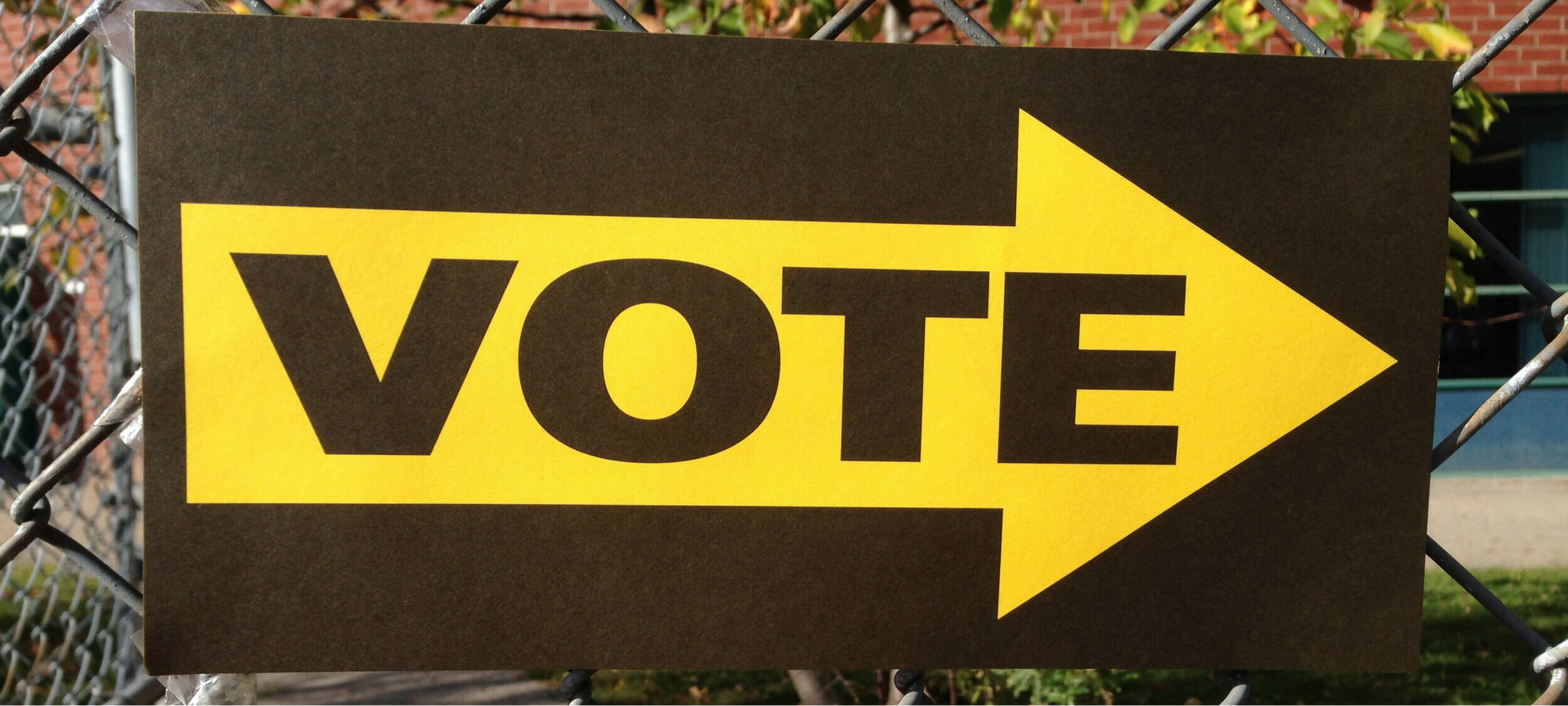
Why compulsory voting undermines democracy
Opinion + AnalysisPolitics + Human Rights
BY Piero Moraro 1 JUN 2012
Australia is one of the 19 countries in the world that legally enforces the vote. For Australian citizens voting is not merely a right, but also a duty. First introduced in Queensland in 1915, extended to the whole country in 1924, compulsory voting is a salient feature of the Australian electoral system. But is it democratic?
The main argument in defence of compulsory voting is the importance of raising citizens’ participation in elections. Australia’s turn-out rate has never fallen below 90% since 1924, in striking comparison with most Western countries that struggle to reach 60%. These are nevertheless, merely quantitative considerations: the fact that more people go to vote is not a better thing for democracy. In fact, it could be argued that compulsory voting is likely to do more damage than good, by reducing the quality of the electoral outcome.
Forcing everyone to vote means that the voice of those with no interest in politics will influence the decision about who rules the country.
Forcing everyone to vote means that the voice of those with no interest in politics will influence the decision about who rules the country. This generates what author Jason Brennan calls ‘pollution of the polls’ in his book The ethics of voting1 and is one of the main causes of the actual crisis of democracy worldwide: incompetent politicians winning elections through media control (the recent case of Italy under Silvio Berlusconi epitomises this phenomenon).
By the same token, compulsory voting cannot be defended by arguing that a government’s legitimacy of a majority formed by a low turnout is questionable, for numbers alone do not add credibility in this regard.
Those who do not care about politics should not vote.
Favouring democracy to other forms of government cannot be because of the mere fact that democracy allows everyone’s voice in the public arena. This might be, if anything, a reason against democracy. Dragging people to the polls will do nothing to improve the quality of our democratic lives, insofar as people do not take seriously what they are doing. There must be something else that makes democracy preferable to other forms of government.
This something else is the empowerment of the citizen. In a democracy, everyone has the power to partake in determining the rules according to which the community should be run. However, the misunderstanding lies in the fact that democracy does not entitle citizens to do everything: it confers not only entitlements but also responsibilities. Those who do not care about politics should not vote.
It could even be argued that they should not have a right to vote, and maybe the state would be better off justifiably preventing them from, not forcing them into, voting. Citizens should undergo a basic competence test, as with driving. This is because careless voters may seriously undermine those other citizens who spend time and energy gathering sufficient information before voting.
People’s efforts to follow politics to develop an informed idea might be cancelled out by the vote of someone else who does not care, but still is given the power to vote. In such a situation, making the effort to follow politics might even be irrational for the individual citizen, given that this effort may well be wasted due to the careless voters. Thus, compulsory voting backfires twice, since it even makes it pointless for citizens to develop political awareness.
Compulsory voting may advance the misleading idea that democracy works even without citizens’ commitment or responsibility.
It is not only wrong to think citizens have a duty to vote. As Brennan argues in his book, it is rather the case that some citizens (those who do not care about politics) have a duty to not vote, for we all have duties to not cause damage to others. It is also the case that not everyone has the right to vote, for the latter is not an unconditional entitlement we receive through mere membership to a democratic community. If people do not care about politics, then they do not have a right to participate—forcing them to vote is counterintuitive, and counterproductive. The right to vote can be gained, and lost, depending on one’s commitment to democratic values.
Compulsory voting does not seem to offer any substantial advantage to the democratic life of a country, since quantity does not mean quality (and in the end, it is the quality of our decision-making procedures that should matter). Compulsory voting may advance the misleading idea that democracy works even without citizens’ commitment or responsibility. To be sure, no one should be forced to be a responsible citizen: however, neither should anyone be forced to do what responsible citizens can do; that is, cast their vote at election time.
Reference
1. Brennan, J. (2011), The ethics of voting, Princeton University Press
Ethics in your inbox.
Get the latest inspiration, intelligence, events & more.
By signing up you agree to our privacy policy
You might be interested in…
Opinion + Analysis
Politics + Human Rights
The Australian debate about asylum seekers and refugees
Opinion + Analysis
Politics + Human Rights, Relationships
Ask an ethicist: do teachers have the right to object to returning to school?
Opinion + Analysis
Business + Leadership, Politics + Human Rights
Who’s afraid of the strongman?
Opinion + Analysis
Business + Leadership, Politics + Human Rights
We are on the cusp of a brilliant future, only if we choose to embrace it
BY Piero Moraro
Piero Moraro holds a PhD in Philosophy from the University of Stirling (UK), and a MSC in Philosophy and Public Policy from the London School of Economics.
Big Brother is coming to a school near you

Big Brother is coming to a school near you
Opinion + AnalysisPolitics + Human Rights
BY Dr. Emmeline Taylor 1 MAR 2012
It’s Monday morning in Newcastle when a child arrives at school, places her finger on the scanner, and waits until a crackly electronic voice acknowledges her.
In Sydney, a wall-mounted CCTV camera records a 12-year-old boy entering a classroom and taking his seat. While this might sound like an Orwellian prophecy, it’s slowly becoming reality. Surveillance technologies such as CCTV cameras and biometrics are being used in schools across Australia. What’s the point? And what are the issues we need to be aware of?
Australia is tentatively following in the footsteps of the UK in implementing surveillance in its schools. In England, it is estimated that 85% of secondary schools have some form of CCTV system, and that a third systematically fingerprint pupils from the age of four. Schools in Australia haven’t reached the same level of near-ubiquity yet, but they are demonstrating a growing appetite.
The effectiveness of CCTV has never been proven and public support is often based on unsubstantiated political rhetoric that it ‘works’.
More than 50 schools in NSW have CCTV cameras in playgrounds and outside dining areas, with plans to install them in classrooms and corridors. Similarly, in Western Australia where the Department of Education confirmed its plans to roll out systems across the state’s schools, half of Perth’s secondary government schools have installed CCTV. Further momentum has been provided by the WA State School Teachers Union that tabled a motion to have at least five surveillance cameras installed in all schools.
The overarching reason cited for the use of CCTV is the prevention and detection of crime. However, it is important to remember that the effectiveness of CCTV has never been proven and public support is often based on unsubstantiated political rhetoric that it ‘works’. In the UK, arguably the CCTV capital of the world, a government funded evaluation failed to find evidence of efficacy. Just one out of 14 CCTV systems demonstrated a significant reduction in crime. More recent studies have revealed that for every 1000 cameras in London, just one crime per year is solved. A sobering thought when the government has already invested more than £500 million in the equipment.
Ethics in your inbox.
Get the latest inspiration, intelligence, events & more.
By signing up you agree to our privacy policy
You might be interested in…
Big thinker
Politics + Human Rights, Relationships
Big Thinker: Confucius
Opinion + Analysis
Politics + Human Rights
If politicians can’t call out corruption, the virus has infected the entire body politic
Opinion + Analysis
Politics + Human Rights, Relationships
Assisted dying: 5 things to think about
Opinion + Analysis
Business + Leadership, Politics + Human Rights
Could a virus cure our politics?
BY Dr. Emmeline Taylor
Dr. Emmeline Taylor is a Reader in Criminology. She has completed empirical research in a number of areas including; surveillance and the societal impact of new technologies, armed robbery, residential burglary, retail crime, crime and security in education, and several evaluations of criminal justice initiatives in England and Australia.
Why have an age discrimination commissioner?

Why have an age discrimination commissioner?
Opinion + AnalysisRelationships
BY The Ethics Centre 1 DEC 2011
The Federal Attorney-General recently decided to amend the 2004 Age Discrimination Act to provide for a an Age Discrimination Commissioner in response to growing evidence of damaging discrimination on the basis of a person’s age.
This discrimination is all too widespread. It affects older people in the main, though people of any age, including young people, experience age discrimination at times.
We are increasingly aware that many able-bodied, keen and productive employees are forced out of the workforce in their early 50s, sometimes even before that, for no reason other than that the employer has bought into the idea, false as it is, that only younger people are dynamic, energetic and able to learn new ways of doing things.
This is age prejudice and it must be tackled.
Any form of prejudice in our society diminishes the person or the groups suffering from this discrimination and diminishes our society as a whole. At the Australian Human Rights Commission, our slogan is: ‘human rights—everyone, everywhere, every day’. We understand that a person’s human rights do not diminish because of their age, just as they should not be diminished because of their race, gender or in the case of a disability.
Australia has had laws against race, gender and disability discrimination for quite a long time. The Australian Human Rights Commission was established by law in 1986, to protect and advocate human rights and to work against illegal discrimination.
As our society and our law-makers came to understand the terrible damage done to individuals and to society by discrimination we have long been familiar with, they came to the recognition that there is another form of discrimination which potentially affects every single human being, and this is age discrimination.
When I think of the long journey we took in Australia to challenge and then to start to reduce discrimination on the basis of sex, I worry that it might take us another generation to get on top of age discrimination. But when I think this through, I come to the view that age discrimination is something we can challenge today and every day in many effective ways.
While it is always hard to get rid of deep-seated prejudices in society, we’ve all had a bit of experience in doing that and I hope we can learn from that experience and remove the burden of age discrimination quickly and completely.
At the Australian Human Rights Commission, my main tool in carrying out this work is the Age Discrimination Act 2004. Like other anti-discrimination laws, it makes illegal discrimination on the basis of age in fundamental areas including employment, finance, education, and goods and services.
The discrimination that is illegal and is causing great damage to individuals and to our economy is most strongly evident in employment.
The discrimination that is illegal and is causing great damage to individuals and to our economy is most strongly evident in employment. I have seen in my short period in this job a great deal of evidence that the mature age worker, and people from 45 are often categorised as mature age, is frequently subjected to workplace discrimination. This unfair treatment can lead to people in their early 50s finding themselves unemployed.
This can be a disaster. Because of age discrimination, people at that age have a very difficult time finding another job. They try hard, they submit many applications, but all too frequently they get knocked back without even an interview.
Of course at that age they are unlikely to have a lot of superannuation and they are not eligible for the age pension. They have to try to manage on the very low Newstart Allowance. Female employees can be in an even worse position because generally they have only small superannuation savings even if they are of an age that they can access their superannuation savings.
At the same time, employers throughout our economy, large and small businesses, are crying out for more skilled workers. Every day the media publishes stories about skills shortages holding back our economic growth.
Well, you might think the solution is obvious. It is in principle, quite obvious to me. Employers need to throw out their prejudices against mature age workers, look closely at the needs of their businesses, and the existing skills of their older workers, and see what steps they need to take to match the two.
In many cases, it will be simply a matter of providing their older workers with some training to upgrade their skills. In other cases, when they consult their employees, they may find that offering them more flexible hours, such as a shorter working week or a shorter working day, will ensure that the employees can keep their jobs and the businesses can continue to profit from their experience and loyalty.
The Hon. Susan Ryan AO was appointed Age Discrimination Commissioner on 30 July 2011. This is an extract from a speech she delivered to a Victorian Equal Opportunity and Human Rights Commission Forum on the Rights of Older People in Melbourne on 28 October 2011. You can read this speech in full at humanrights.gov.au
Ethics in your inbox.
Get the latest inspiration, intelligence, events & more.
By signing up you agree to our privacy policy
You might be interested in…
Opinion + Analysis
Business + Leadership, Relationships, Science + Technology, Society + Culture
Who does work make you? Severance and the etiquette of labour
Opinion + Analysis
Relationships
Want men to stop hitting women? Stop talking about “real men”
Explainer
Health + Wellbeing, Relationships
Ethics Explainer: Values
Big thinker
Relationships, Society + Culture
Big Thinker: Socrates
BY The Ethics Centre
The Ethics Centre is a not-for-profit organisation developing innovative programs, services and experiences, designed to bring ethics to the centre of professional and personal life.
The Australian debate about asylum seekers and refugees

The Australian debate about asylum seekers and refugees
Opinion + AnalysisPolitics + Human Rights
BY Tim Soutphommasane 1 SEP 2011
Debate about asylum seekers and refugees, especially when it concerns “boat people”, is often characterised by misrepresentation and hysteria. Amid all of the politics concerning the issue, the ethical dimensions of asylum are not always given their proper attention.
This paper seeks to offer a brief guide to the ethics of asylum and refugees, focusing in particular on four general questions:
- What should be the place of empathy and compassion in our moral reasoning with respect to asylum seekers and refugees?
- To what extent must any ethical account of refugee policy incorporate concerns about practical or political feasibility?
- What is the nature of Australia’s moral obligations to asylum seekers and refugees, and to what extent are these shaped by our understanding of membership?
- Can mandatory detention and offshore processing be ethically justified?
It would be a demonstration of good faith if Australia should increase its intake of refugees under its humanitarian program.
It is argued that empathy should figure in ethical reasoning, that it is irresponsible to adopt an ethical framework without attention to practical feasibility, and that in a liberal democracy, moral obligations are complicated by a value of self-determination.
In policy terms, the paper argues that it is difficult to justify the continuation of mandatory detention, and that onshore processing of asylum seekers who arrive in Australia by boat is the ideal response. Yet the latter would be best achieved with bipartisan political support and as part of a credible, regional solution. By itself, a shift to onshore processing is likely to lead to an increase in the arrival of boats carrying asylum seekers wanting to make it to Australian territory.
In such a scenario, political leaders must educate public opinion about asylum seekers and refugees and avoid politicking over boat people. Where such resolve is missing, a shift to onshore processing may carry the risk of a number of “spillover” effects – in particular, the possible undermining of public acceptance of a substantial, racially non-discriminatory immigration program, and of a multicultural Australian society.
If there is to be offshore processing, as may well be the case, there must be legislated minimum standards for how asylum seekers are treated in any offshore facility, based on relevant human rights standards, with adequate legal protections. It is also important that any durable policy response involves a regional dimension. It is important to ensure Australia bears a larger burden, if there is to be successful cooperation with our regional neighbours, particularly in stemming the arrival of asylum seekers by boat. It would be a demonstration of good faith if Australia should increase its intake of refugees under its humanitarian program.
There is also merit in proposals to establish an independent commission to facilitate informed public debate, and an independent authority to administer Australia’s humanitarian programs. At least until there can be strong bipartisan political leadership on this issue, it may be necessary to seek an institutionalised form of depoliticising this most divisive of issues.
Read Dr Tim Soutphommasane’s introduction to the Ethics of Asylum and Refugees Symposium, held on 30 June 2011.
Ethics in your inbox.
Get the latest inspiration, intelligence, events & more.
By signing up you agree to our privacy policy
You might be interested in…
Opinion + Analysis
Politics + Human Rights
Settler rage and our inherited national guilt
Big thinker
Politics + Human Rights
Big Thinker: Peter Singer
Opinion + Analysis
Climate + Environment, Politics + Human Rights
Increase or reduce immigration? Recommended reads
Opinion + Analysis
Politics + Human Rights
Is the right to die about rights or consequences?
BY Tim Soutphommasane
Tim Soutphommasane is a political theorist and Professor in the School of Social and Political Sciences, The University of Sydney, where he is also Director, Culture Strategy. From 2013 to 2018 he was Race Discrimination Commissioner at the Australian Human Rights Commission. He is the author of five books, including The Virtuous Citizen (2012) and most recently, On Hate (2019).
Who’s your daddy?

“Discrepant paternity” – or what fathers’ rights discourses call paternity fraud – has become a rallying point for parts of the fathers’ rights movement. Though fathers’ rights groups have successfully engaged with the media and politicians to achieve desired changes to the family law system, what is novel is the use of paternity fraud discourse to achieve these ends.
Types of paternity fraud
Bureaucratic and fathers’ rights discourse use the term paternity fraud to refer to two distinct phenomena. The first is where non-biological fathers are assigned legal and fiscal obligations for children they have never parented and may not even have known existed. Men attempting to use DNA evidence of non-paternity to terminate such obligations are blocked by legal and/or bureaucratic obstacles.
The second referent for paternity fraud in fathers’ rights discourse is the discovery by a man in a married or de facto relationship, through deliberate or incidental genetic testing, that he is not the biological father of one or more of the children he is parenting.
In Australia, the case of Liam Magill is a classic case of what I will call ‘cuckold’ paternity fraud. Several years after separating from his wife Meredith, Magill subjected his three children to secretive DNA paternity testing that revealed that the two youngest were genetically unrelated to him. He successfully terminated child support payments for these children and, because he was in arrears for payments for all three children, was effectively offered a refund for previous amounts paid for the two when this debt was cancelled.
Despite this, Magill pursued a claim for compensation from his wife on the grounds of deceit. While a lower court awarded Magilla $70,000 for pain, suffering and economic loss, the Australian High Court eventually dismissed the case on the grounds that the tort of deceit was an inappropriate vehicle for remedying the wide variety of dissimulation that can occur in intimate relationships.
Motivations for testing
Father’s rights groups claim that between 10 percent and 30 percent of children are being parented by men who are unaware they are not the genetic father. These figures are used to support their contention that discrepant paternity is a widespread social problem in need of systemic address through changes to family law and policy.
Fathers’ rights discourse implies that men are the prime instigators of paternity tests in the face of duplicitous and resistant mothers. This depiction is particularly seen in the push by fathers’ rights groups for ‘motherless testing,’ or the testing of the child’s DNA without the mother’s consent.
In arguing in favour of the legality of this sort of testing, fathers’ rights advocates claim that any law requiring the consent of both parents would effectively deny fathers the ‘right to know’ because mothers with something to hide would always withhold consent for the child to be tested.
Fathers’ rights discourse articulates four ways in which paternity fraud cheats or defrauds men or children: first, by creating a relationship between a man and a non-biological child/ren; second, by stripping non-biological fathers of the resources they need to start another family in which they can create and raise biological progeny; third, by denying the biological father knowledge of his progeny and/or a chance to form a relationship with that progeny; and fourth, by denying children full and factual knowledge of their biological origins and the resulting opportunity to both form a relationship with their biological father and to gain knowledge of paternity genetics essential to their health.
The central claim of paternity fraud discourse is that a man’s relationship with a non-biological child does not constitute a real parent–child relationship, and that cuckold paternity fraud cheats or defrauds husbands of real fatherhood.
The causative agent in this fraud is the unfaithful wife who, through her sexual infidelity and subsequent failure to disclose it, causes the man to form a relationship with a biologically unrelated child that he wrongly believes – and has a right to expect – is his biological progeny. In its arguments in favour of compulsory DNA testing at birth, the group Men’s Confraternity reveals its understanding of authentic fatherhood as biological fatherhood:
“DNA testing should be a compulsory procedure at the birth of every child born to ensure that the correct father is registered. Paternity must be determined via DNA testing at birth because any man can be deceived into believing they are the father.” (Men’s Confraternity, 2006)
Citing figures impossible to confirm, the website Men’s Rights Online asserts that non-biological relationships between men and children provide no basis for legal paternity and its attendant fiscal obligations for children:
“The Court System … forc[es] males to continue paying child support for children that they are NOT the biological father of as DNA testing proves. It is also brought to the knowledge of the judges in the individual cases that DNA testing proves the male paying child support is NOT the biological father… A minimum of 1,600,000 (1.6 million) males are being forced to financially support children that they are NOT biologically related to.” (Men’s Rights Online, 2003–2006)
Implicit in much paternity fraud discourse are normative claims about the wrongs of female infidelity and subsequent duplicity with regard to it, and the potential reproductive consequences. Justice, the discourse suggests, requires men to be released from support obligations for children of the marriage not just because of the non-biological relationship between father and child, but because they have resulted from illegitimate female sexual and reproductive activity.
Paternity fraud discourse also asserts that, when biological paternity is wrongly ascribed to the social father, the biological father loses the opportunity to know he has a biological child and/or accept rights to and responsibilities for this child. The group Australian Paternity Fraud, for instance, claims that paternity fraud ‘victims’ include “the biological father that may not even know he is a father and who, when the deceit is uncovered, will suffer … mental … damage”.
Finally, it is asserted that paternity fraud denies children necessary knowledge of their biological origins, the chance to form a relationship with their biological father and the knowledge of paternal genetics necessary for optimal medical treatment.
At the heart of cuckold paternity fraud discourse is the claim that real fatherhood is biological fatherhood. However, neither this assertion nor assertions about the threat to children’s health posed by non-disclosure of paternal genetics stand up well to scrutiny.
Legal definitions of parenthood
DNA paternity testing is often credited with causing the paternity fraud phenomenon. When performed properly, DNA tests guarantee a 99.9% probability of paternity.
Legislators in both Australia and England see the commercial paternity testing industry as a means of reducing the cost to taxpayers of growing numbers of socially fatherless children. They understand that, while not all children have social fathers, they all have biological ones, and that the new testing technology could, for the first time in history, reliably identify these men.
Affordable and reliable genetic testing is available, and the legal and financial implications of test results for men, women and children are significant and profound.
Motivations to test
While research data are scant, those available suggest a variety of motivations for both men and women to undertake or consent to tests that lead to the discovery of discrepant paternity.
Counter to the picture offered by fathers’ rights discourse, such tests are not always undertaken by men in the face of the mother’s ignorance or resistance.
Discrepant paternity may be discovered via a genetic test taken for other reasons. For instance, genetic tests may be performed on the parents of a sick child to ascertain whether the illness is caused by a hereditary condition or to determine whether the parent is a tissue match for a sick child. Parents of children diagnosed with a hereditary condition may also undertake genetic tests to discover their carrier status and the risk of transmission to future children. Separated and divorced mothers may test their children in the hope that proof of the social father’s non-paternity will allow them to block their ex-husband’s access to children of the relationship.
It is perhaps worth noting that the potential for mothers to deploy DNA paternity testing technology against social fathers to deny them access to children they have parented within the marriage was an early concern expressed by academic lawyers about the widespread use of DNA testing technology and concomitant legal changes to definitions of paternity and paternal obligation. This worry – about the risk testing posed to the maintenance of men’s relationship with children – contrasts with what appears to be the main concern of contemporary academic lawyers: the claimed injustice of men’s inability to shrug off support obligations – and be compensated for past amounts paid – for genetically unrelated children.
Single and divorced mothers may wish to test, or be coerced into doing so by the state, in order to facilitate the identification and/or enforcement of paternal support obligations. In Australia, England and the United States, a failure to identify and, where necessary, prove the paternity of their child’s father may put all or part of the mother’s welfare benefits in jeopardy.
In Australia, it is estimated that around one third of tests are sought by mothers wanting or needing – through obligations related to their pension – to enforce child support obligations from biological fathers.
As well, men, or parties acting on their behalf, pursue tests. They do so, the evidence suggests, not to satisfy a disinterested pursuit of the truth – as father’s rights discourse often suggests – but in the hope of altering existing legal and fiscal obligations for children.
The link between men’s, their new wives’ or their parents’ decision to test and the desire to alter legal responsibilities for children in the wake of relationship breakdown is further supported by Australian data showing that at least some men who test know that the child of the marriage is or may be genetically unrelated to them.
Finally, men with little doubt about their biological paternity may test to humiliate estranged partners and/or delay paternity adjudication and the assignment of support obligations.
Harm to children
The fathers’ rights argument about a child’s right to know takes in both the idea that the creation of a parenting relationship between a father and a genetically unrelated child is wrong because it is not a ‘real’ parent–child relationship and the claim that children’s health and identity formation are harmed by ignorance of their biological father’s existence and paternal genetics.
Claims of a child’s right to know also encompass assertions about the harms to children’s health resulting from non-disclosure of paternity uncertainty or discrepancy.
The claim that only biological paternity is real paternity is asserted rather than argued in father’s rights discourse, and is contestable on moral, logical, evidence-based and consistency grounds. In particular, the lack of argument leaves many questionable assertions including, though not limited to: What makes biological parental relationships real or valid in a way non-biological ones are not? How can genetics be understood as critical to the creation of real parent–child relationships when parties to such relationships can die unaware that their social parent–child relationship was not accompanied by a genetic one? If non-genetically based relationships between men and children harm both, how can the deliberate creation of such relationships in some contexts, most notably where a couple is infertile, be justified?
The central role that fathers’ rights discourse gives to paternal genetics in the establishment of a child’s identity may also be questioned.
While reflective of dominant Western social understandings that biological or blood relationships form the basis of kinship, Ruth McNair argues that “non-biological parenting has existed for millennia as a successful and meaningful addition to or replacement for biological parenting” (McNair, 2004, p. 39).
While some evidence exists to support claims that children may be harmed by the failure to disclose the existence of non-genetic parental relationships, McNair has found that this harm appears largely attributable to secrecy about the existence of such relationships rather than to a decisive role of genetic knowledge in identity formation (McNair, 2004, pp. 39–45).
Indeed, McNair adds:
“… the profound role social parenting plays in children’s understanding of who they are may be why some adopted children choose not to pursue knowledge about their genetic parents and suffer no negative outcomes as a consequence.”
Of course, identity is hard to define and measure, but this does suggest that, while it may be preferable for parents to give their children a truthful account of their conception story, including information relevant to their genetic lineage, the failure to do so need not necessarily damage children’s identity formation or overall social and psychological wellbeing.
The failure of fathers’ rights discourse to problematise the potential harms to children resulting from men’s behaviour around cuckold paternity raises questions about the sincerity of such concerns.
For instance, the discourse is largely silent on the question of paternal motives for testing and silent about the harms caused by men who respond to test results disconfirming biological paternity by abandoning children they have parented from birth.
In contrast to the gendered and non-nuanced depictions of cuckold paternity offered by fathers’ rights groups, analysis and evidence suggest that discrepant paternity reflects the complex nature of sexual and intimate relationships at the end of the twentieth and start of the twenty-first centuries.
At the heart of cuckold paternity fraud discourse is the claim that real fatherhood is biological fatherhood. However, neither this assertion nor assertions about the threat to children’s health posed by non-disclosure of paternal genetics stand up well to scrutiny.
In contrast, feminists who value autonomy may share concerns raised in cuckold paternity fraud discourse about the harm suffered by men and children when informed consent is denied.
Defining fatherhood in social and intentional terms could end the nexus in law, social policy and the public imagination between biological fatherhood and fiscal obligations for children, undermine the ‘you play, you pay’ philosophy supported by biological definitions of fatherhood, and reduce demand for DNA paternity testing with their high costs to father–child relationships.
References
McNair, Ruth (2004), Outcomes for children born of ART in a diverse range of families (occasional paper), Victorian Law Reform Commission, Victoria, Australia.
See also Men’s Rights Online at www.mens-rights.net/law/paternityfraud.htm and Men’s Confraternity at www.mensconfraternity.org.au
Ethics in your inbox.
Get the latest inspiration, intelligence, events & more.
By signing up you agree to our privacy policy
You might be interested in…
Opinion + Analysis
Politics + Human Rights, Relationships
Why we should be teaching our kids to protest
Opinion + Analysis
Politics + Human Rights
How we should treat refugees
Opinion + Analysis
Business + Leadership, Relationships
The transformative power of praise
Explainer
Relationships






